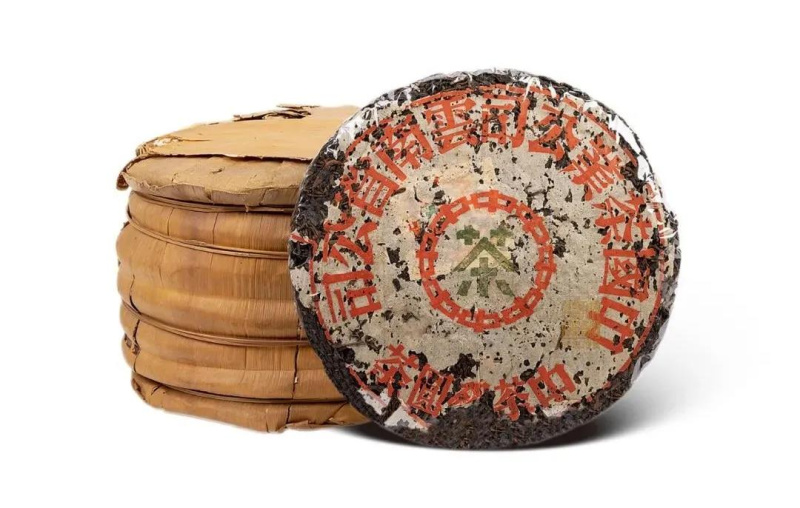This pancake is known by its alternative name, Diqiu Bing (地球饼, dìqiú bǐng, "Globe Pancake"), which is reflected on the packaging and conveys the international spirit of the conference.
Paired with this pancake, the same factory produced a second anniversary pancake: “Yunnan tea jiaoyi shichang kaye jinyan bin” kāiyè jìniàn bǐng, “Anniversary pancake on the occasion of the opening of the Yunnan Tea Market”).
The raw materials for pu'er were collected from the Kunming city district (Chinese: 昆明, kūnmíng).
This tea is a journey through time and space that begins with the first cup.
The aroma of the dry leaf is reminiscent of a hot sunny summer day, where the air is filled with the sweetness of camphor, the aromas of wild herbs and the freshness of an oak forest.
When the leaf is heated in a dish, it reveals an even richer and sweeter aroma, reminiscent of taiga berries and juniper, with light resinous shades, sweet tobacco and pollen.
The aroma of the washed leaf is deep and dense, woody and fruity, reminiscent of a tropical garden with its ripe fruits, mango and salakka (snake fruit).
The taste of the tea is velvety, deep and multifaceted, resinous and fruity at the same time, with a long-lasting berry sourness turning into the sweetness of cane sugar. Some menthol and persimmon in the aftertaste.
After infusion, the chahai has a sweet and fresh aroma of blackberry and juniper, complemented by notes of young lemon balm.
Sheng Puer 2002 "International Puer Tea Exhibition" of the "Tailian" factory is a story contained in each leaf, an invitation to an adventure that awaits you with every sip. Let yourself be immersed in this world of tastes and aromas, and let each cup be a new chapter of your own journey.
|
Name in Chinese
|
地球饼 |
|
Pinyin
|
dìqiú bǐng |
|
English name
|
International Puerh Tea Exhibition |
|
Translation
|
International Puer Tea Exhibition |
|
Country
|
China |
|
District
|
Kunming (Chinese: 昆明) |
|
Provinces
|
Yunnan (云南) |
|
Habitat
|
Куньмин (кит.昆明) |
|
Manufacturer
|
Тай Лянь (台联) |
|
Raw material production date
|
2002 |
|
Year of pressing
|
2002 |
|
Pressing form
|
Bing Cha (Cake Tea) |
|
Tea tree (bush) variety
|
Lao Shu |
|
Size
|
20x20x2 |
|
Length, cm
|
20 |
|
Width, cm
|
20 |
- Комментарии
- Вконтакте
Pu-erh is one of the most unique types of tea, which only gets better with age. Many people, when they first encounter this tea, wondered: why is pu-erh more often found in pressed form (cakes, bricks, tochas), and not in loose form? The reasons for this are related to both history and the practical aspects of storing and fermenting tea. Despite modern technologies that allow the production of loose pu-erh, the shape of pressed cakes remains unchanged. And pu-erh is more often found on sale in pressed form, for example, in the form of cakes or bricks, and loose pu-erh is less common. We will talk about the reasons for pressing pu-erh into cakes in this article.
Puer is a unique Chinese tea that is distinguished by its depth of taste, complexity of aromas and versatility of aftertaste. Its taste characteristics are formed under the influence of many factors, from growing conditions to the brewing method. Let's look at the main ones.




















































































